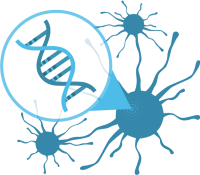The proposed project would focus on analyzing quantitative data from a 4 year NIMH-funded study entitled “Integrating evidence-based depression treatment in primary care: Tuberculosis (TB) in Brazil as a model” (PI: Sweetland, K01MH104514). The aim of the study was to assess whether social network analysis could be used to leverage the receptivity and connectivity of TB providers in a Brazilian public health system in a way that could accelerate the adoption (implementation) and diffusion (dissemination) of an evidence-based treatment for depression treatment in a primary care network. Baseline receptivity was operationalized via six brief quantitative scales to measure mental health literacy, work self-efficacy, organizational climate, attitudes towards evidence-based practices, organizational readiness to change and individual innovation thresholds. Connectivity was assessed by asking TB providers with whom they discuss difficult cases, give advice to, or receive advice regarding difficult TB cases. Baseline receptivity and connectivity data was used to identify 3 pilot sites in which to train primary care providers to deliver evidence-based depression treatment for one year.
Continue reading





